Ozone Seems Like a Quick Fix — But Bed Bugs Aren’t
When you first discover bed bugs, it’s tempting to reach for an ozone generator. After all, ozone can kill bacteria, neutralize odors, and wipe out mold. So why not bed bugs?
The problem is that ozone doesn’t reach where bed bugs live — deep inside mattress seams, wall cracks, and clothing folds. Even powerful commercial units can’t penetrate far enough without filling the air with unsafe levels of ozone gas.
So if ozone isn’t the answer, what’s really going on with bed bugs — and how do you get your life back?
 Bed Bugs 101: Why They’re a Problem, Where They Hide, and Why Clothes Matter
Bed Bugs 101: Why They’re a Problem, Where They Hide, and Why Clothes Matter
Why Bed Bugs Are a Big Deal
Bed bugs don’t spread disease, but they do cause itchy bites, sleepless nights, and stress that can wear you down fast. Their bites often appear in clusters or rows, usually on arms, legs, or the neck. Some people have no reaction, while others get red, swollen welts that take days to heal.
The worst part? They’re patient. Bed bugs can live months without feeding, waiting quietly until you lie down again. For a medical overview of symptoms and identification, see the CDC’s guidance: CDC: Bed Bugs.
Where Bed Bugs Hide
Bed bugs are master hiders. They squeeze into paper-thin spaces and prefer places near where people sleep. Typical hiding spots include:
- Mattress seams and box spring fabric
- Behind headboards and baseboards
- Inside screw holes, wall outlets, and picture frames
- Under loose wallpaper, rugs, or carpet edges
- In dresser drawers, nightstands, and even book bindings
- Inside clothing and laundry piles near beds or chairs
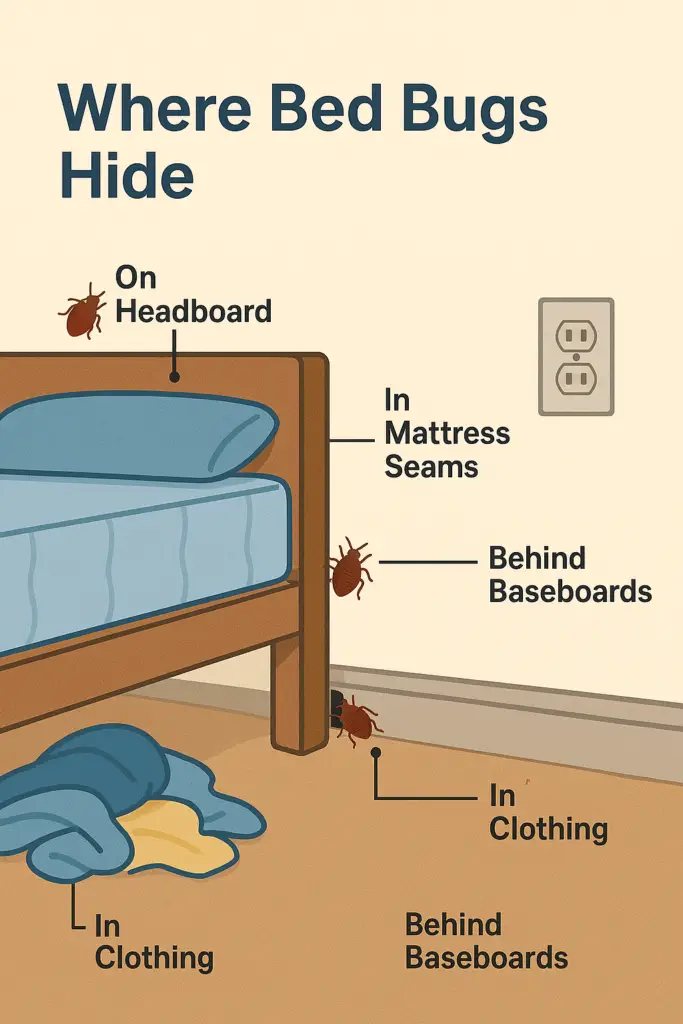 For a detailed, practical field guide, see EPA: Bed Bugs and the University of Minnesota Extension’s excellent overview: UMN Extension: Bed Bugs.
For a detailed, practical field guide, see EPA: Bed Bugs and the University of Minnesota Extension’s excellent overview: UMN Extension: Bed Bugs.
Why Clothes Are Such a Big Issue
Clothing gives bed bugs warmth, texture, and scent — all things they seek. They cling to worn items, hide in cuffs, and hitchhike to other rooms or even other homes. A single infested hoodie or blanket can reintroduce bed bugs weeks after you thought they were gone.
That’s why washing and sealing clothes is a crucial step. You’re cutting off one of their best hiding and travel routes.
 What Actually Works to Get Rid of Bed Bugs
What Actually Works to Get Rid of Bed Bugs
Here’s the complete, realistic process — not a one-day trick, but a plan that works.
 Step 1: Contain and Clean Everything
Step 1: Contain and Clean Everything
- Strip the bed completely. Put all bedding straight into heavy-duty trash bags or plastic bins beside the bed. Don’t carry loose sheets through the house.

- Wash and dry on high heat. Hot water and at least 30 minutes on high heat kills bed bugs and eggs. After drying, immediately seal items in clean bags or bins labeled CLEAN – DO NOT OPEN YET.
- Vacuum and steam the bed frame and mattress. Vacuum seams, edges, and cracks. Steam slowly — about 1 inch per second — to let the heat do its job. Let everything dry 30 minutes.
- Install mattress and box spring encasements. Zip them completely shut and check the zipper seal. These trap any bugs inside (they’ll starve) and block new ones from getting in. Leave them on for at least 12 months. You can sleep on them immediately.
- Add clean bedding. Use freshly laundered sheets and pillowcases from your sealed “clean” set. Keep extras sealed until you’re sure the infestation is gone.

- Set up interceptor traps. Place them under each bed leg to catch bugs trying to climb up or down.
Step 2: Manage Your Clothes the Smart Way
- Pick a clean rotation. Before sealing everything, choose ~1 week of outfits. Wash/dry on high heat and store in a sealed tote or bag you open only when dressing.
- Keep the rest sealed ~2 weeks. Long enough for hidden bugs to die or starve. If activity persists after two weeks, rewash and keep sealed another week.
- Re-wash as you rotate. When your wear set gets dirty, launder on high heat and return it to the clean tote.
- Dirty clothes protocol. Toss worn items directly into a “to-wash” bag — never on the bed or floor.
Step 3: Vacuum and Steam Regularly
- Vacuum daily for 2 weeks, then every other day for one more week. Focus on corners, baseboards, bed frame joints, and under furniture. Seal/dispose bags outdoors immediately.
- Steam weekly to hit hatchlings that survived the first pass.
 Step 4: Use EPA-Approved Bed Bug Sprays
Step 4: Use EPA-Approved Bed Bug Sprays
Choose products that clearly list “bed bugs” on the label (e.g., Ortho Home Defense, EcoRaider, Harris, Bedlam). Apply carefully in cracks, furniture joints, and along baseboards. Repeat every 7–10 days for three cycles to catch newly hatched bugs, and ventilate rooms after use. For pesticide safety basics, see EPA: Controlling Bed Bugs.
Step 5: Sleep in Your Bed (Really)
It feels wrong, but it’s necessary. Once your bed is encased and clean, keep sleeping in it. If you start sleeping on the couch, the infestation spreads. Interceptors under the legs help confirm progress.
Step 6: Use Ozone for Odor Cleanup Only
After your pest treatments are complete, ozone can be useful to remove musty or chemical odors. Run the generator in an empty room for 1–2 hours (3–4 hours for larger rooms). Air out for at least 12 hours before re-entry. Use ozone only for deodorizing — not for killing bed bugs.
For safety guidance and limitations of ozone indoors, see the EPA’s advisory: EPA: Ozone Generators that are Sold as Air Cleaners. Also see our guides: Ozone Generator Safety Guide and How to Get the Ozone Smell Out of Clothes.
How Long It Takes to Reclaim Your Room
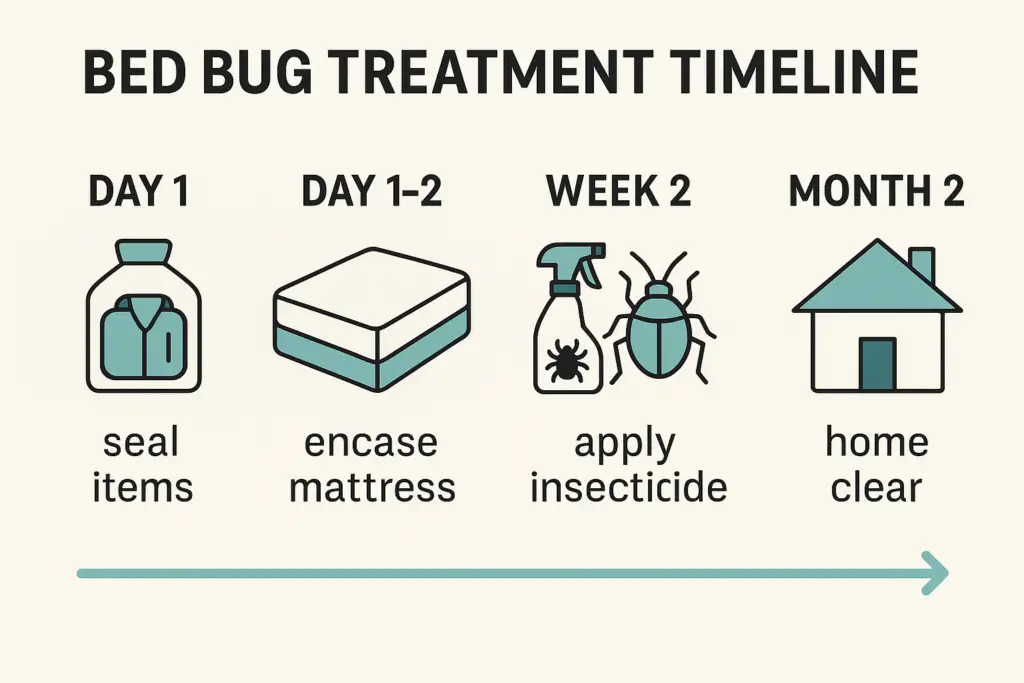 Here’s the real timeline most people experience:
Here’s the real timeline most people experience:
| Phase | What’s Happening | What You Can Do | Bed/Room Use |
|---|---|---|---|
| Days 1–3 | First cleanup: wash, vacuum, encase, and trap. | Bag laundry, set traps, encase mattress. | Safe to sleep with encasement. |
| Week 1–2 | Eggs hatch; traps catch wanderers. | Vacuum daily, reapply spray after 7–10 days. | Fully usable, but stay consistent. |
| Week 3–4 | Population drops sharply. | Steam again, inspect traps and seams. | Normal use with caution. |
| Week 5–8 | No new bites or spots; hidden bugs starve. | Keep encasement and traps in place. | Back to normal life. |
| Month 3–4 | Complete eradication. | Continue light monitoring. | Maintain encasement as prevention. |
Comparison: Ozone vs. Other Bed Bug Treatments
| Treatment | Kills Eggs | Safe Indoors | DIY Option | Cost | Best For |
|---|---|---|---|---|---|
| Ozone | No | ⚠️ Not at effective levels | ⚠️ Risky | $$ | Odor removal only |
| Heat Treatment (Pro) | Yes | Yes (professional) | No | $$$$ | Full infestations |
| Steam Cleaning | Yes | Yes | Yes | $$ | Mattresses & furniture |
| Encasements & Traps | No (trap/starve) | Yes | Yes | $ | Prevention & monitoring |
| EPA Sprays | Yes | Use as directed | Yes | $ | Light infestations |
Common Myths About Ozone and Bed Bugs
Myth 1: “Ozone kills everything.”
Fact: It kills exposed organisms, not hidden insects or eggs. See EPA’s ozone advisory.
Myth 2: “You can just run it overnight.”
Fact: The ozone level needed would be unsafe to breathe.
Myth 3: “If it smells clean, the bugs are gone.”
Fact: Ozone removes odors but doesn’t confirm pest removal.
Myth 4: “You can’t sleep on your bed for months.”
Fact: Once encased, your mattress is safe to sleep on immediately.
Frequently Asked Questions
Can ozone kill bed bug eggs?
No. Bed bug eggs have thick shells that protect them from ozone exposure.
Is ozone safer than pesticides?
Not at the concentrations needed for pest control. Ozone can harm your lungs and corrode electronics. For indoor ozone risks, see EPA.
What kills bed bugs instantly?
Heat above 120°F kills them and their eggs on contact — that’s why steam and professional heat treatments are so effective. See EPA: Bed Bugs.
Can I use ozone on my mattress?
Only after extermination, for odor cleanup. Run ozone in an empty room and ventilate afterward.
How do I remove the ozone smell afterward?
Open windows, use fans, and wash fabrics. Baking soda and sunlight also help. See our guide: Ozone Smell on Clothes.
Final Thoughts
Ozone might make the room smell cleaner, but it won’t solve a bed bug problem. They’re stubborn, patient insects that require time and consistency — not just gas or chemicals.
The good news is, with heat, steam, encasements, and persistence, you can reclaim your bed and your sleep safely. Stick to the plan, stay consistent for a few weeks, and you’ll win.
Learn More
- What Is an Ozone Machine? Benefits and Risks Explained
- Ozone Generator Safety Guide
- Ozone and Mold Removal: What You Should Know
- EPA: Ozone Generators that are Sold as Air Cleaners
- CDC: Bed Bugs
- University of Minnesota Extension: Bed Bugs

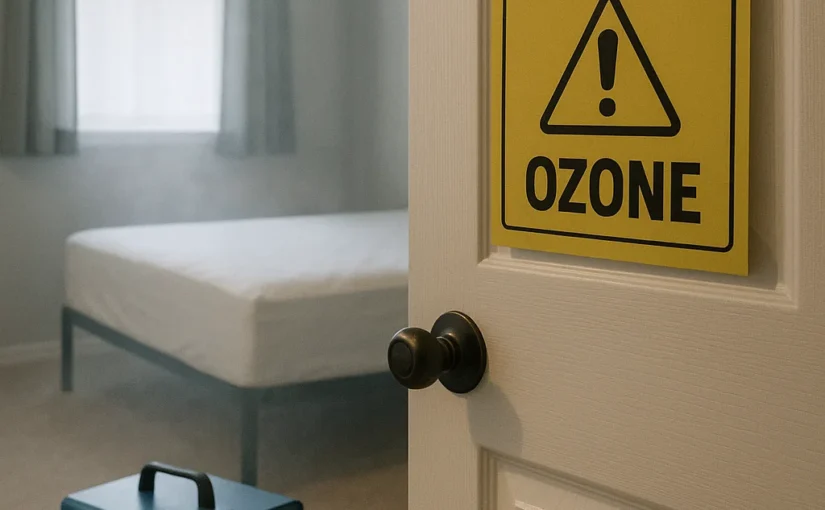
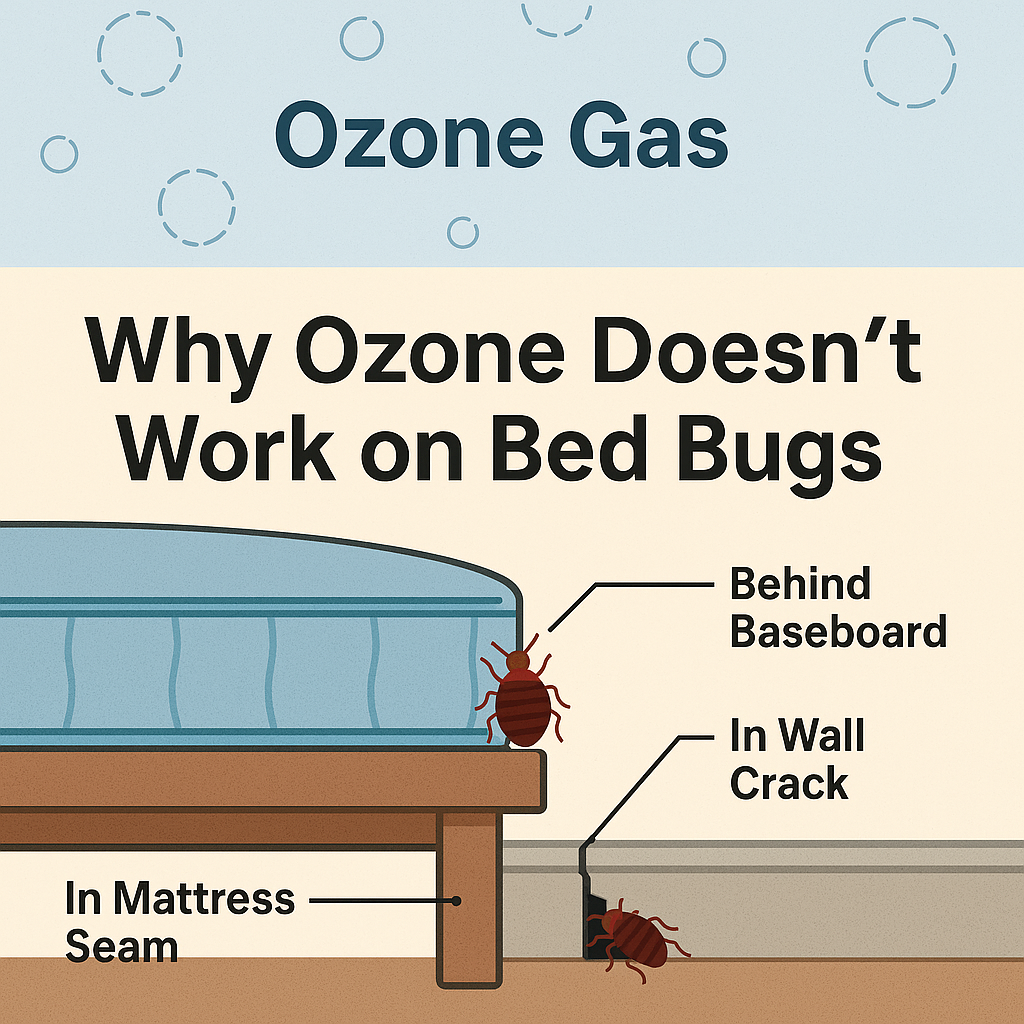 Bed Bugs 101: Why They’re a Problem, Where They Hide, and Why Clothes Matter
Bed Bugs 101: Why They’re a Problem, Where They Hide, and Why Clothes Matter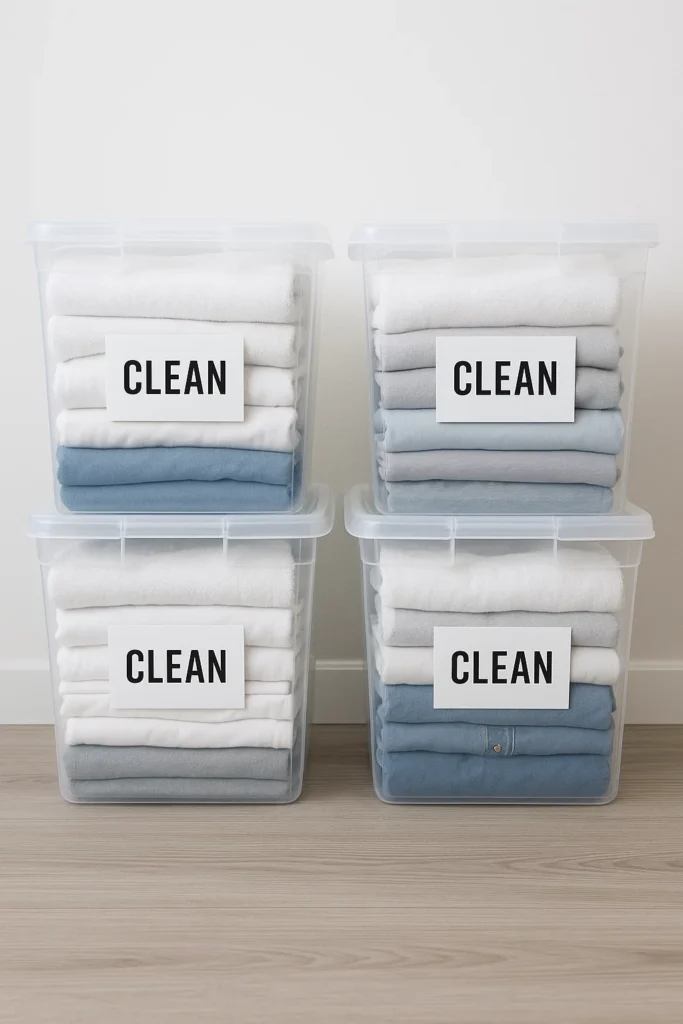 What Actually Works to Get Rid of Bed Bugs
What Actually Works to Get Rid of Bed Bugs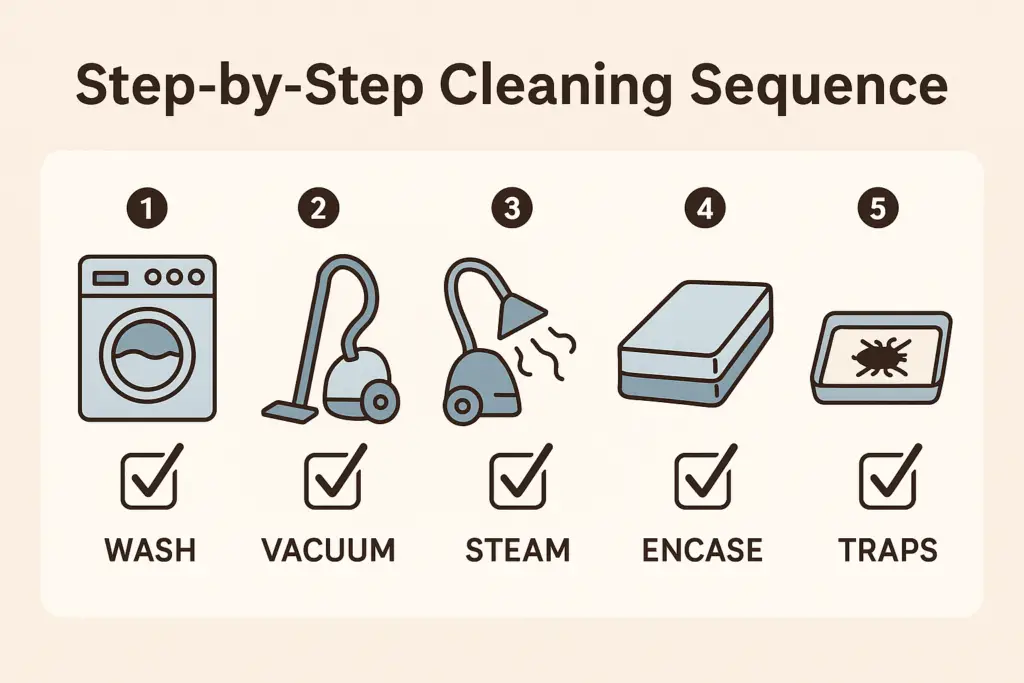 Step 1: Contain and Clean Everything
Step 1: Contain and Clean Everything
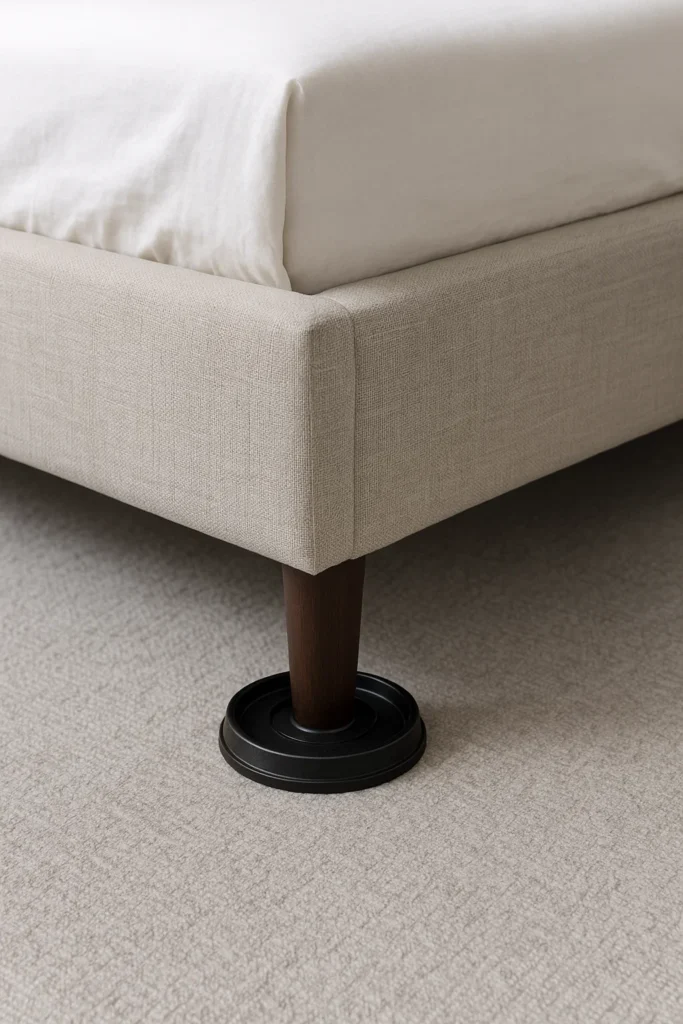
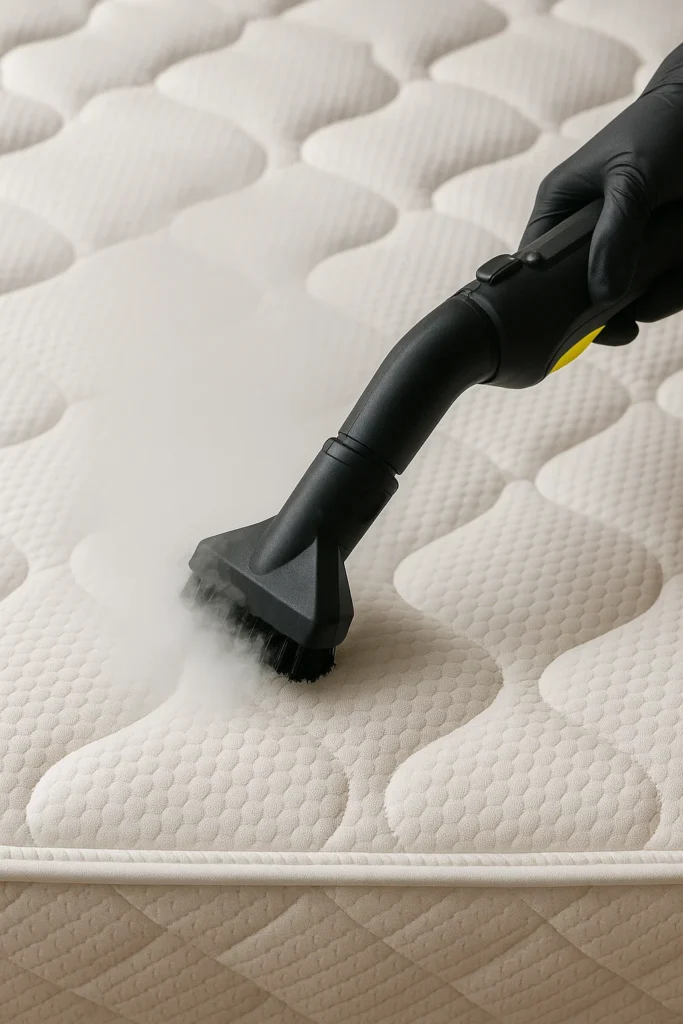 Step 4: Use EPA-Approved Bed Bug Sprays
Step 4: Use EPA-Approved Bed Bug Sprays
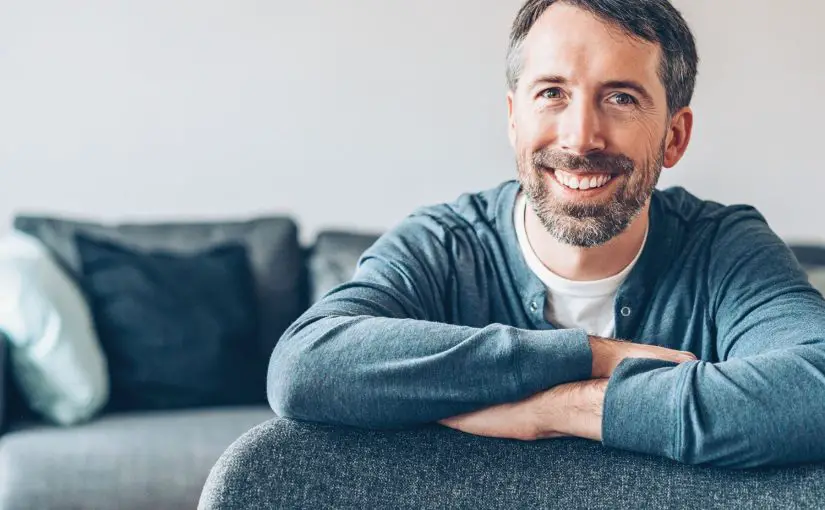
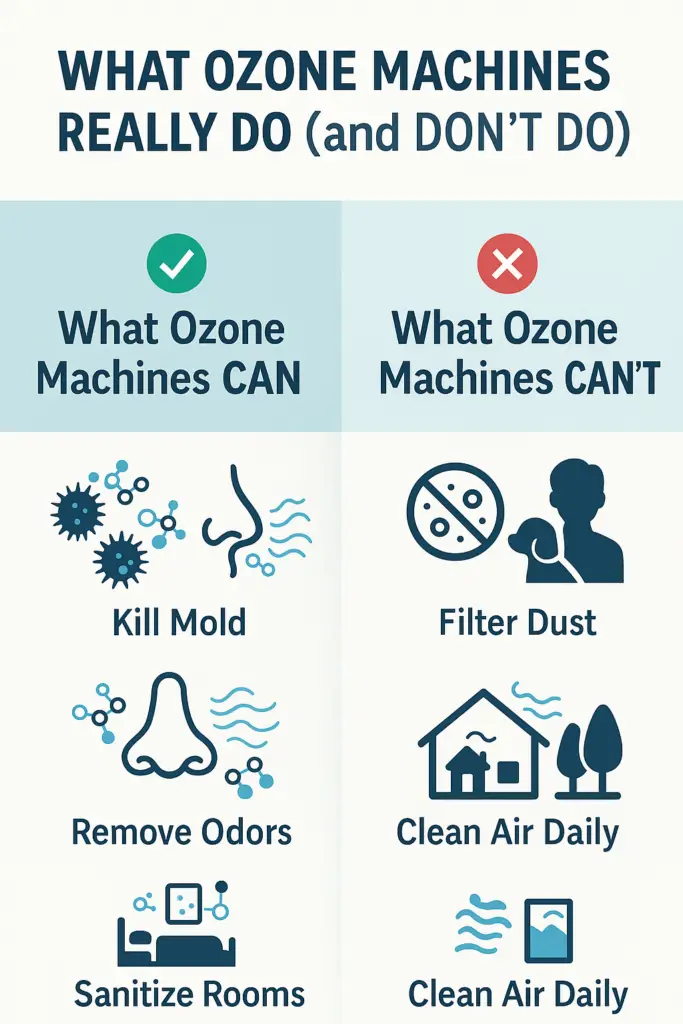
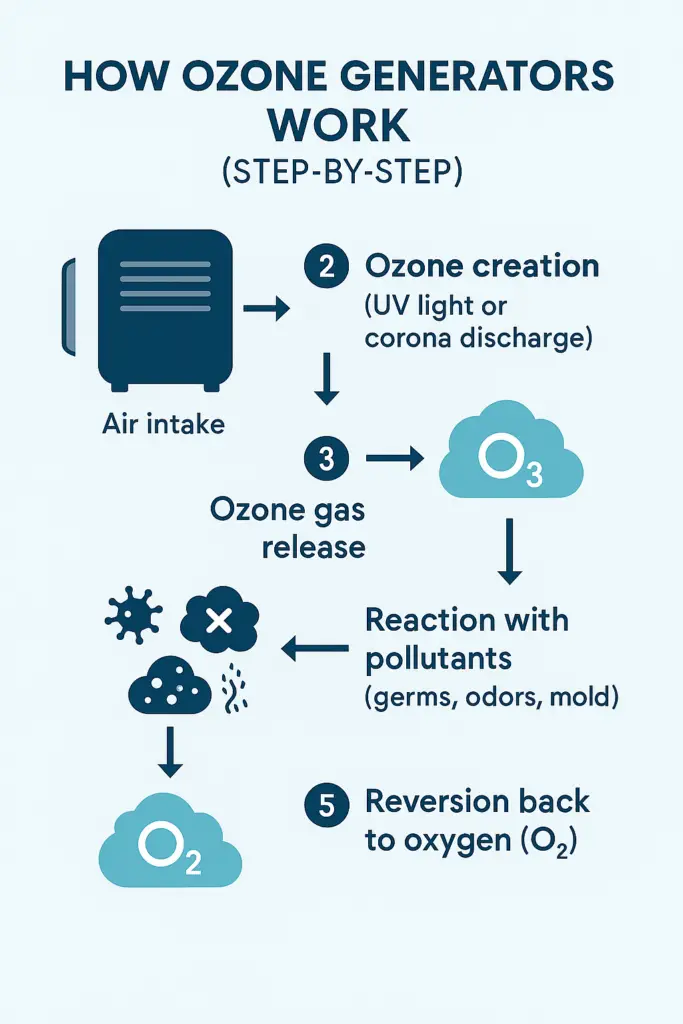
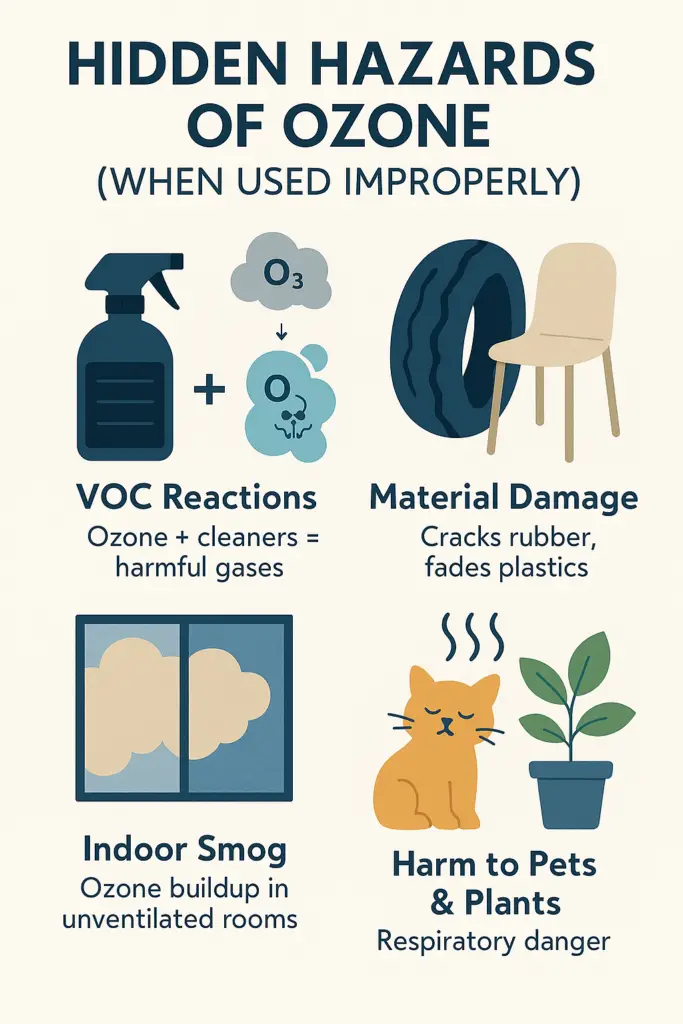
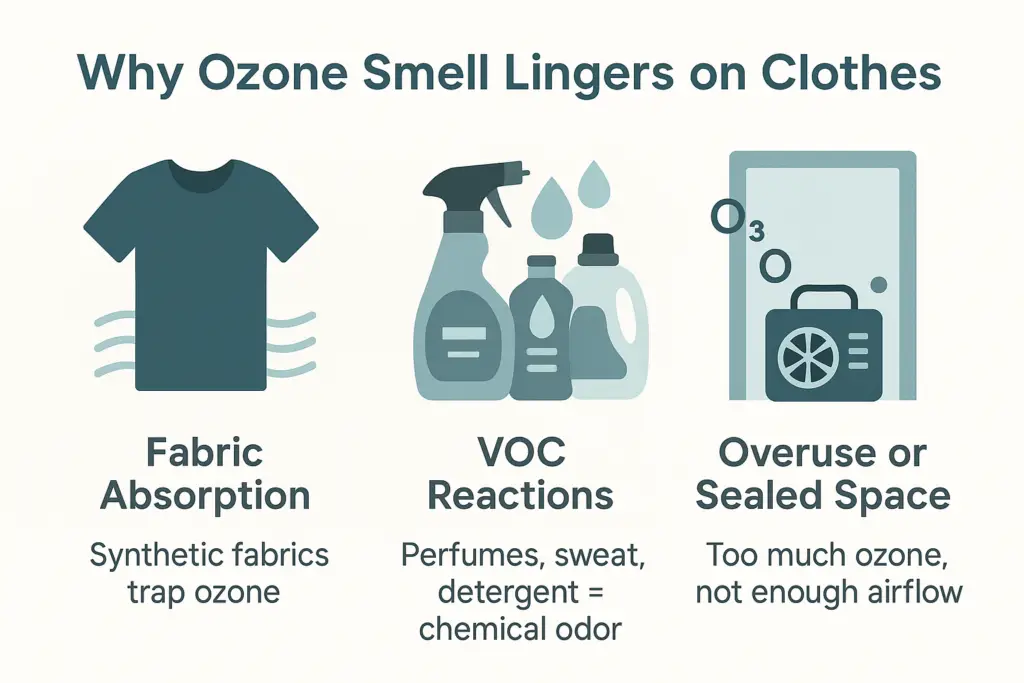
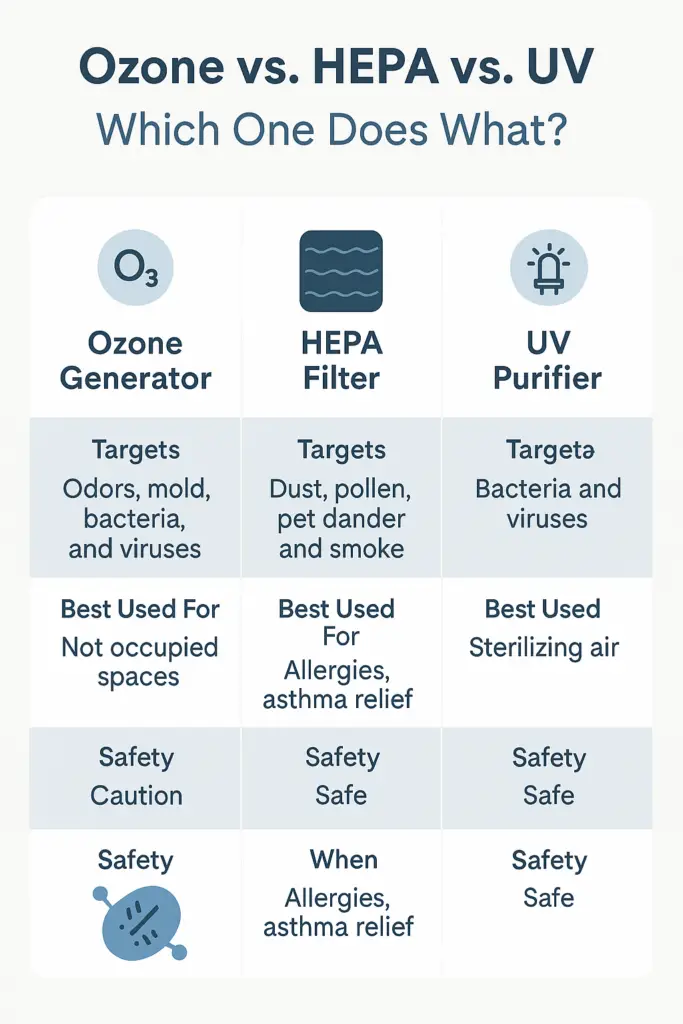

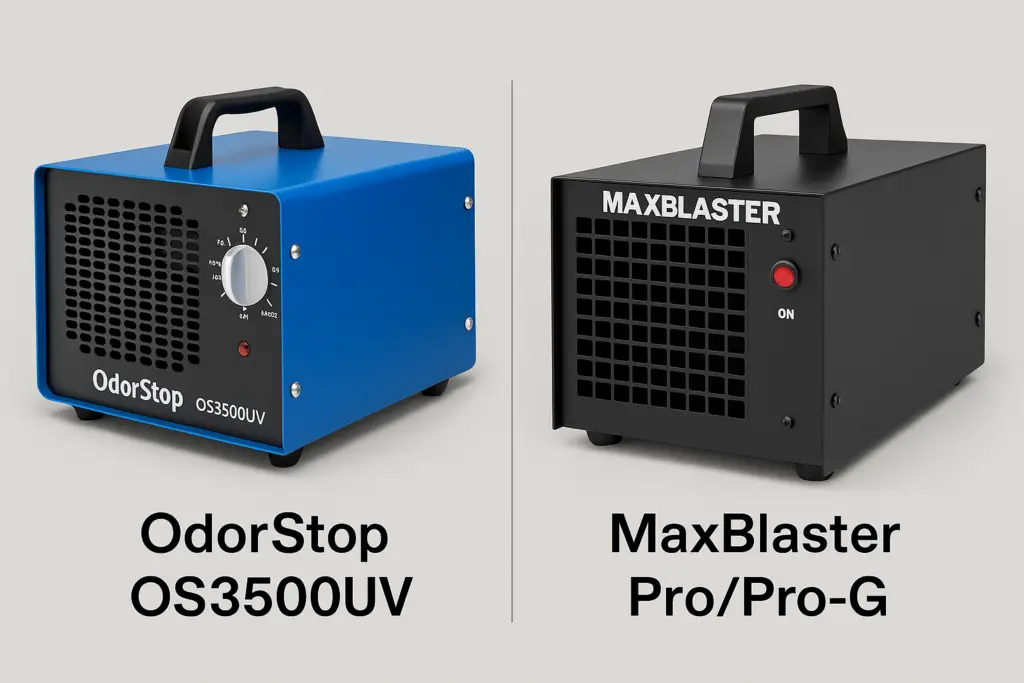
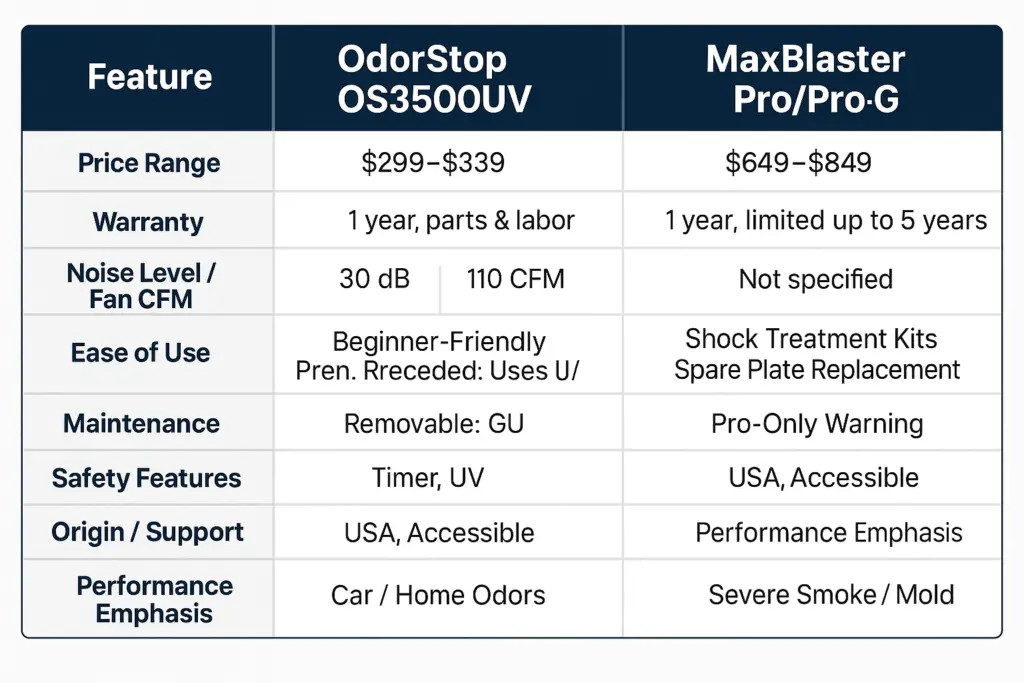
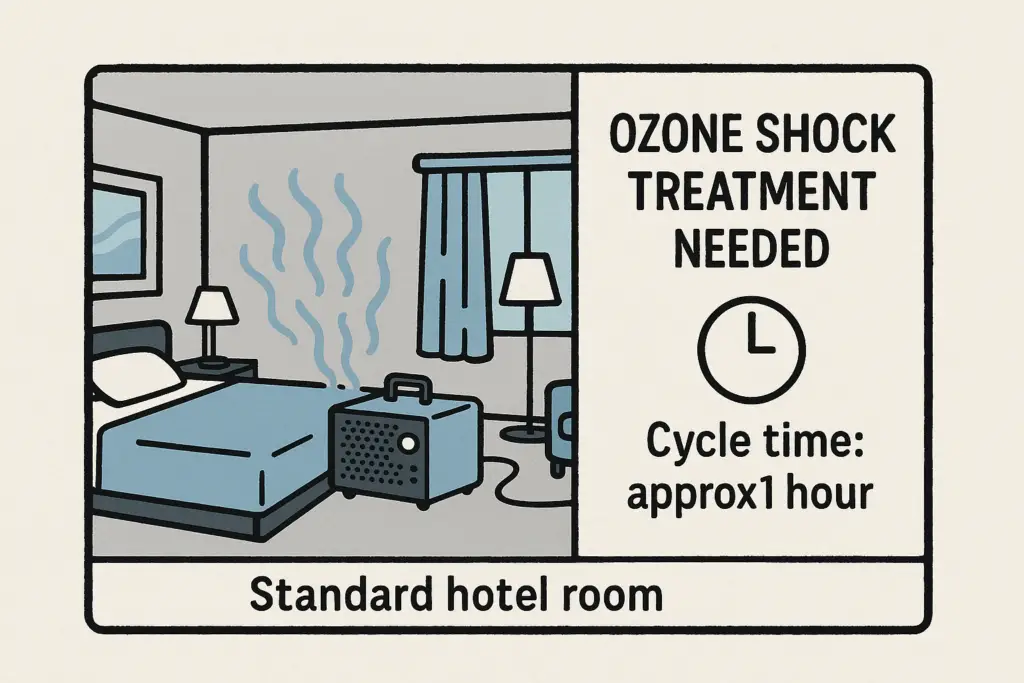
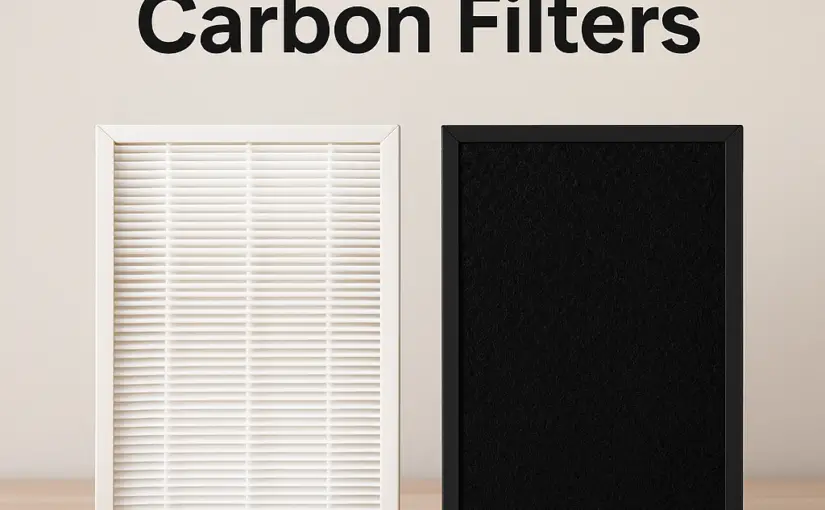
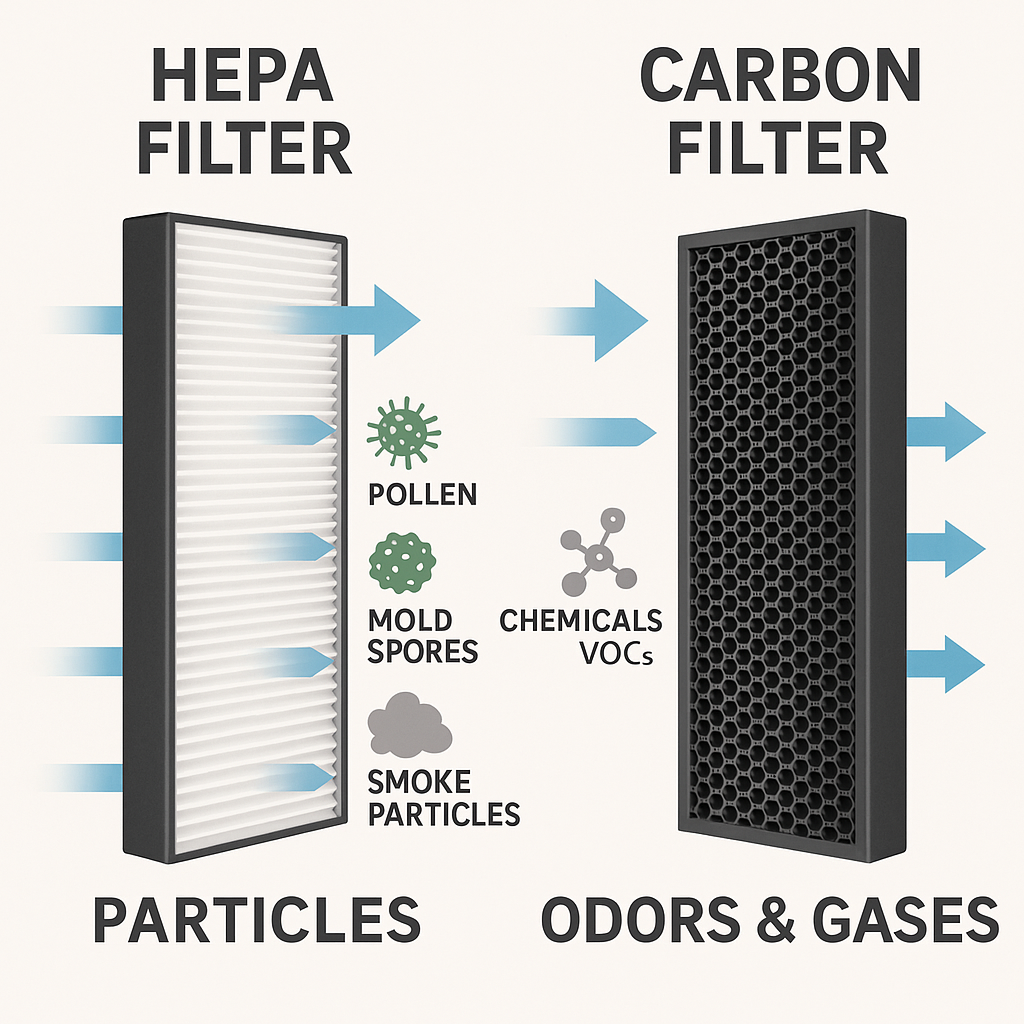
 Why Most Air Purifiers Use Both
Why Most Air Purifiers Use Both
 Why You Shouldn’t Use Tap Water in a CPAP
Why You Shouldn’t Use Tap Water in a CPAP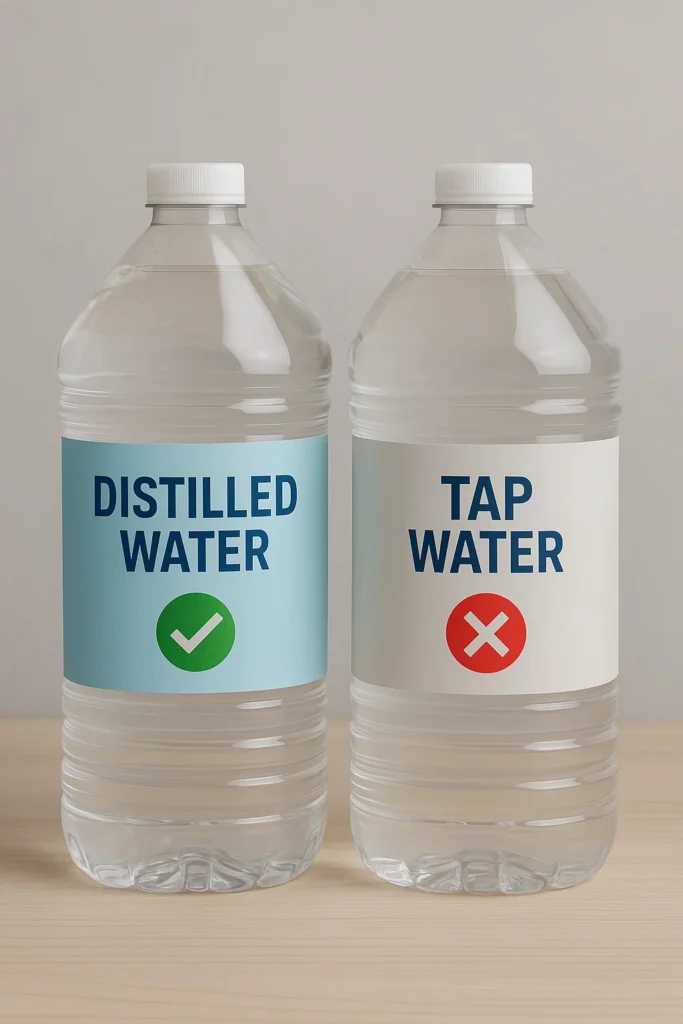 What Happens If You Use Tap Water?
What Happens If You Use Tap Water?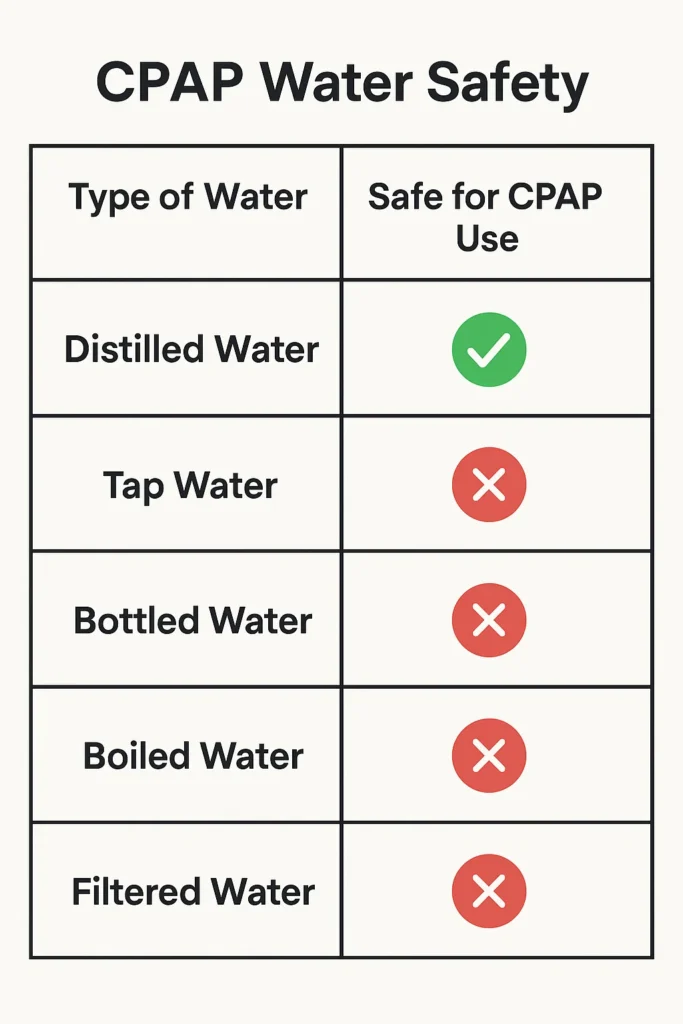 Water Types Compared for CPAP Use
Water Types Compared for CPAP Use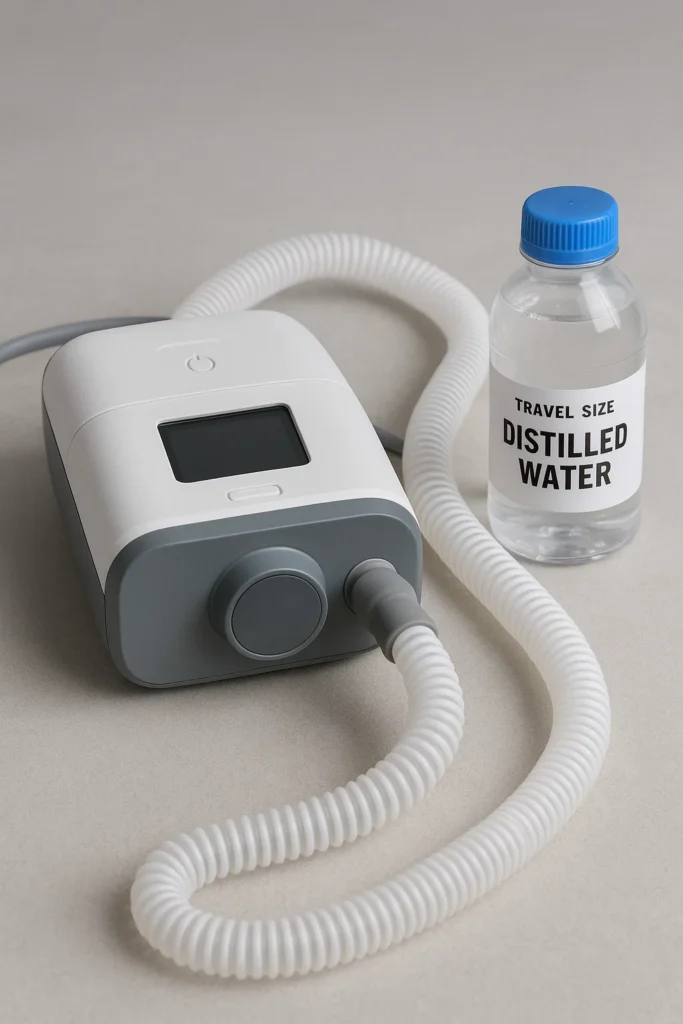 Travel Tips for CPAP Users
Travel Tips for CPAP Users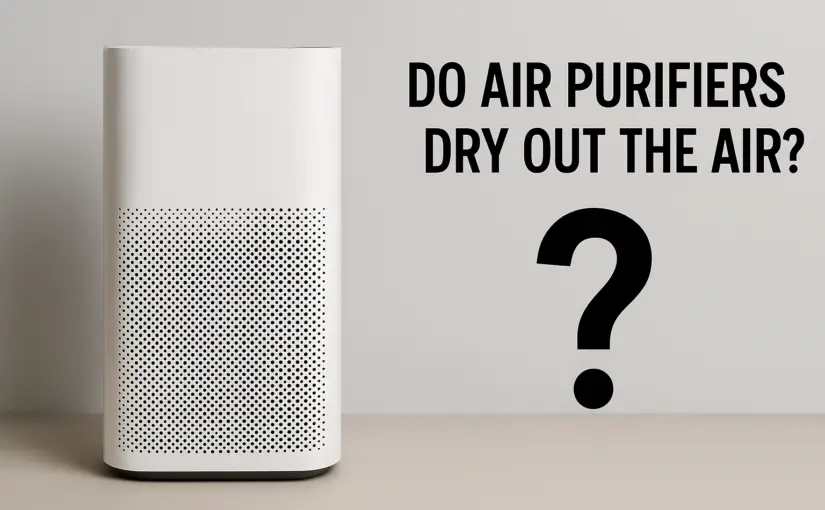
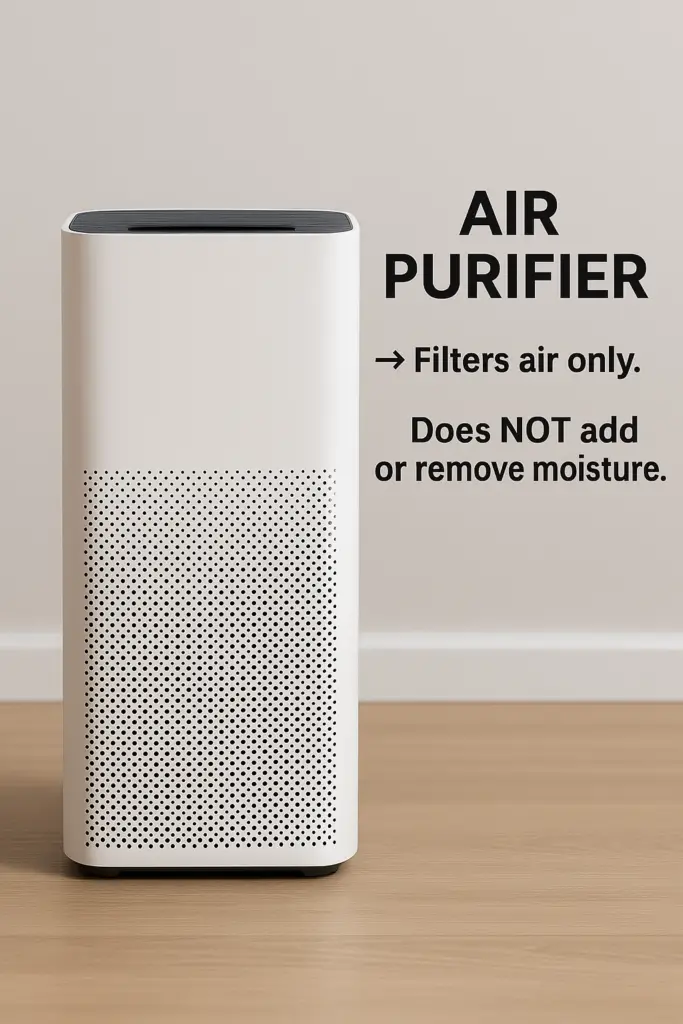 Why Do People Think Air Purifiers Dry Out the Air?
Why Do People Think Air Purifiers Dry Out the Air? Air Purifiers vs. Humidifiers vs. Dehumidifiers
Air Purifiers vs. Humidifiers vs. Dehumidifiers Do These Devices Ever Overlap?
Do These Devices Ever Overlap?
 4.Standing water
4.Standing water Recap
Recap

 Preventing Mold Growth in AC Units
Preventing Mold Growth in AC Units

 Removing Mold from AC Units
Removing Mold from AC Units


 Hidden Dangers of Carbon Filters
Hidden Dangers of Carbon Filters

 Health Implications of Air and Water Contaminants
Health Implications of Air and Water Contaminants While carbon filters are excellent for removing gases, odors, and
While carbon filters are excellent for removing gases, odors, and